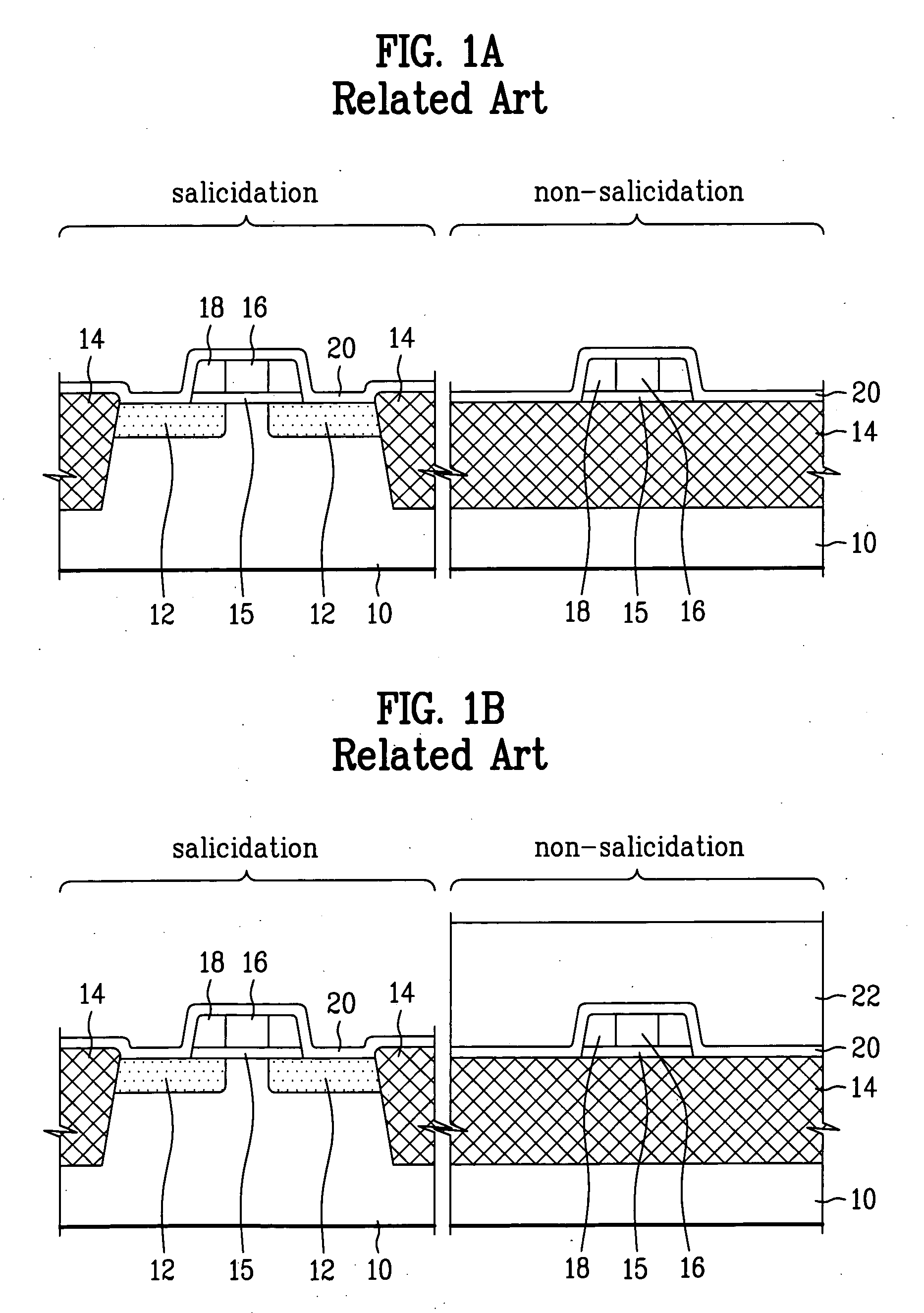Method for forming salicide layer in semiconductor device
a technology of semiconductor devices and silicide layers, which is applied in the direction of semiconductor devices, basic electric elements, electrical equipment, etc., can solve the problems of limiting the speed of a very large scale integration (vlsi) circuit, affecting the production efficiency of semiconductor devices, so as to reduce processing steps and simplify the manufacturing of integrated circuits. , the effect of preventing plasma damage to exposed silicon surfaces
- Summary
- Abstract
- Description
- Claims
- Application Information
AI Technical Summary
Benefits of technology
Problems solved by technology
Method used
Image
Examples
Embodiment Construction
[0025] Reference will now be made in detail to exemplary embodiments of the present invention, examples of which are illustrated in the accompanying drawings. Wherever possible, like reference designations will be used throughout the drawings to refer to the same or similar parts.
[0026]FIGS. 3A-3D respectively show steps of a salicide forming method according to one embodiment of the present invention, which simultaneously forms an electrical contact on top of a gate electrode and a source-drain diffusion region and carried out after formation of the gate electrode and the source-drain diffusion region on a semiconductor substrate.
[0027] As shown in FIG. 3A, a gate electrode 16, a source-drain diffusion region 12, and an oxide layer spacer 18 are formed on a substrate 10. A salicide forming metal 24 such as cobalt or titanium is then deposited on the entire surface of the substrate 10. The salicide forming metal 24 can be deposited over the whole wafer, including a salicidation ar...
PUM
| Property | Measurement | Unit |
|---|---|---|
| area | aaaaa | aaaaa |
| electrically | aaaaa | aaaaa |
| surface resistance | aaaaa | aaaaa |
Abstract
Description
Claims
Application Information
 Login to View More
Login to View More - R&D
- Intellectual Property
- Life Sciences
- Materials
- Tech Scout
- Unparalleled Data Quality
- Higher Quality Content
- 60% Fewer Hallucinations
Browse by: Latest US Patents, China's latest patents, Technical Efficacy Thesaurus, Application Domain, Technology Topic, Popular Technical Reports.
© 2025 PatSnap. All rights reserved.Legal|Privacy policy|Modern Slavery Act Transparency Statement|Sitemap|About US| Contact US: help@patsnap.com



